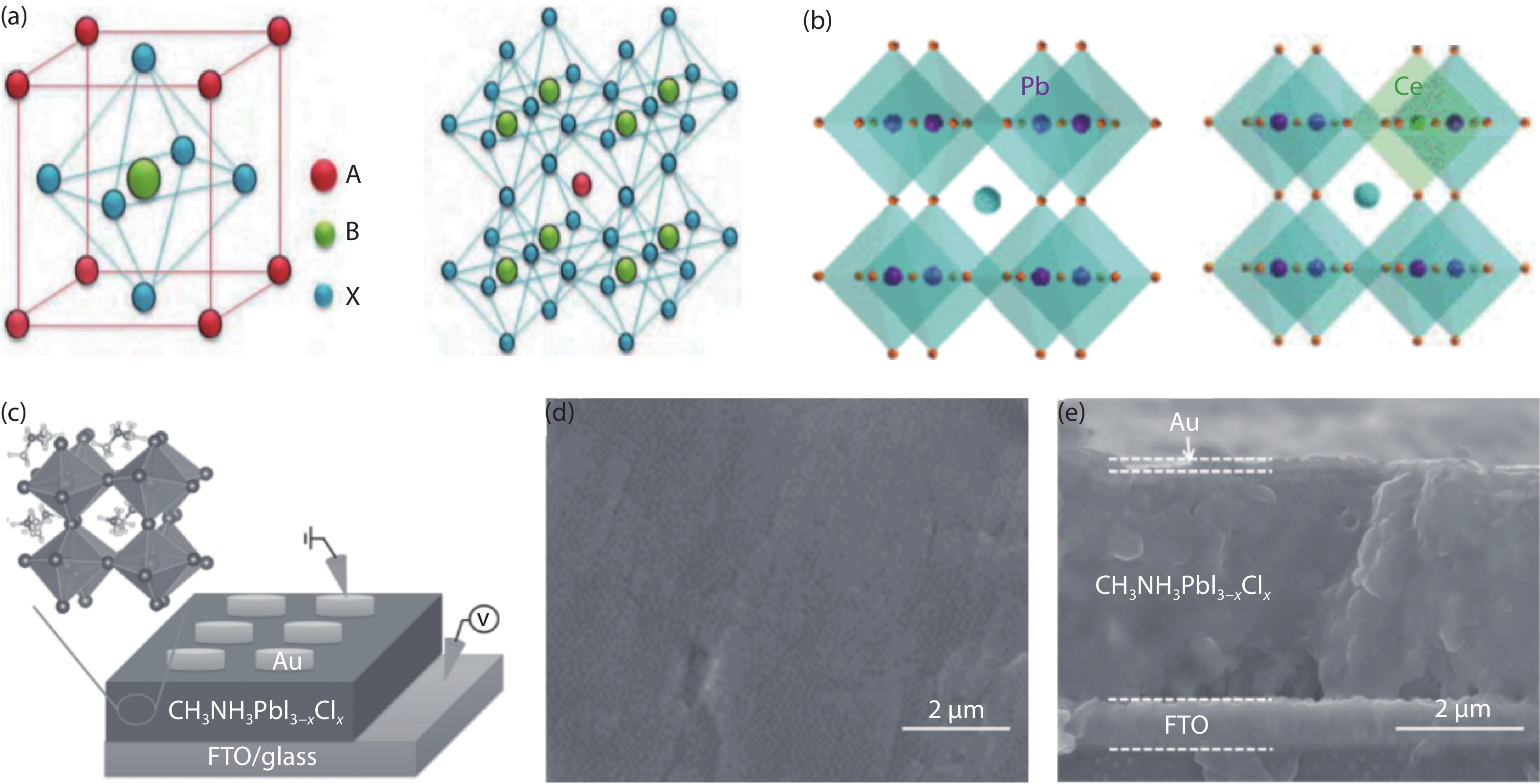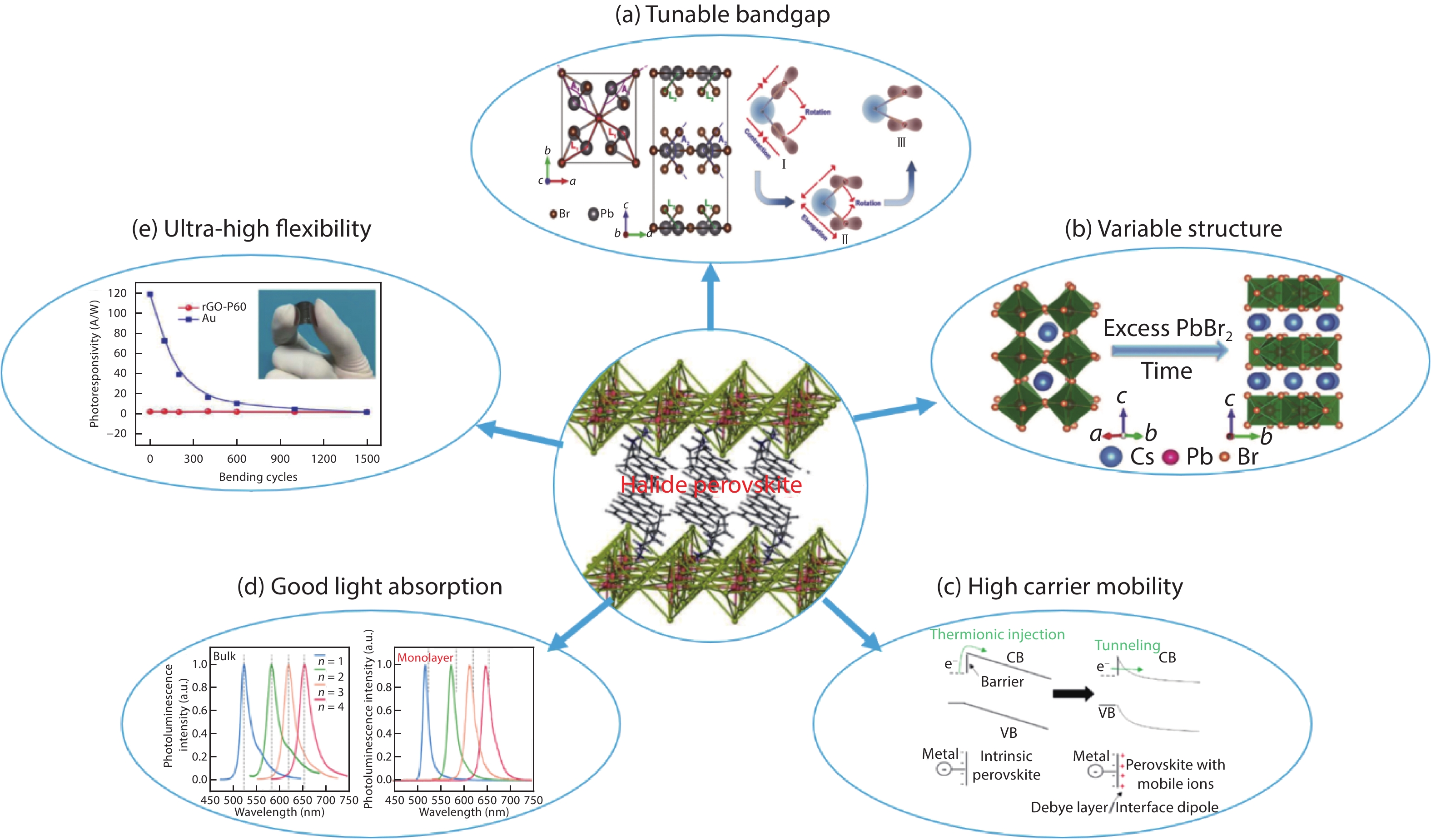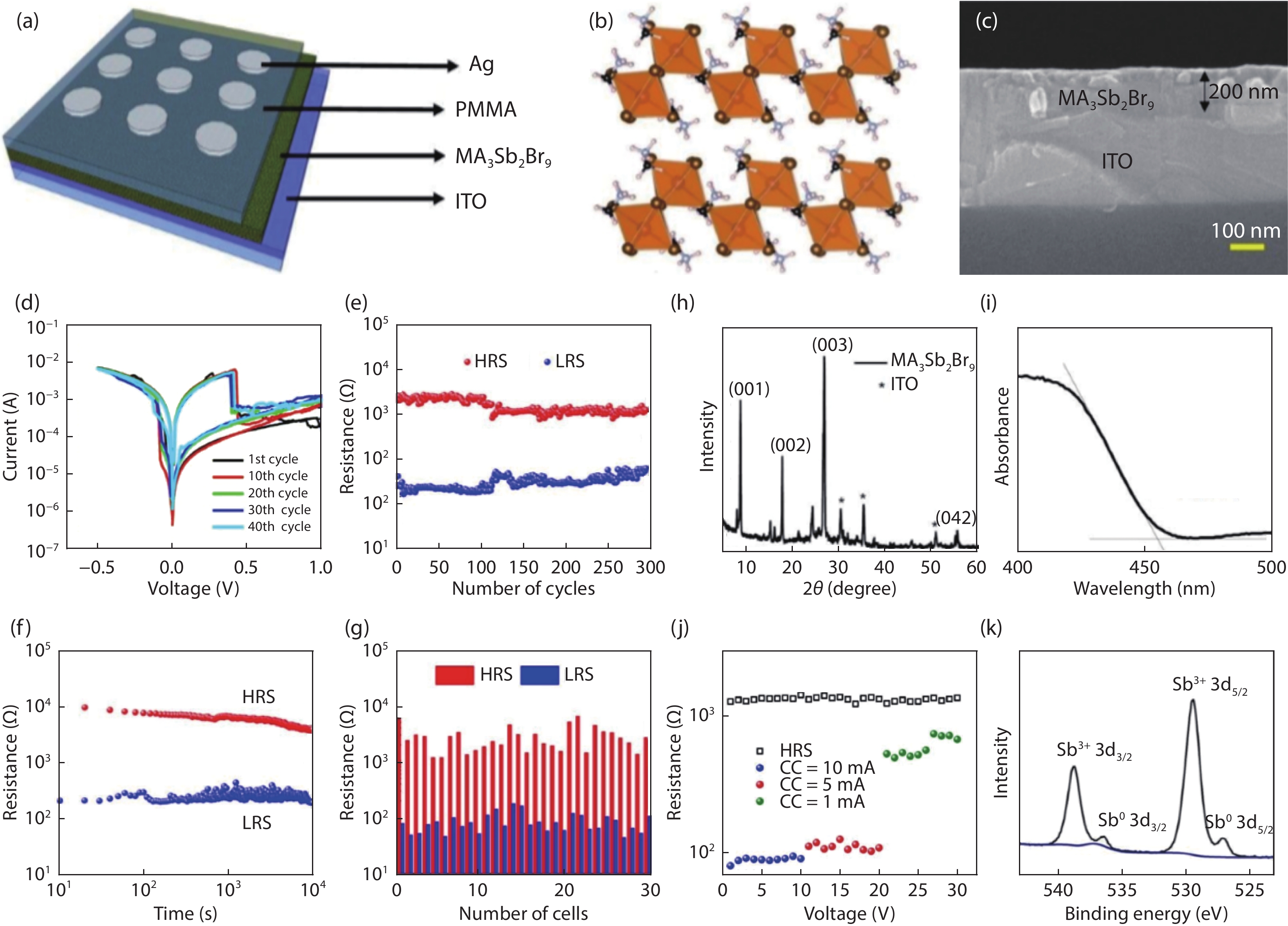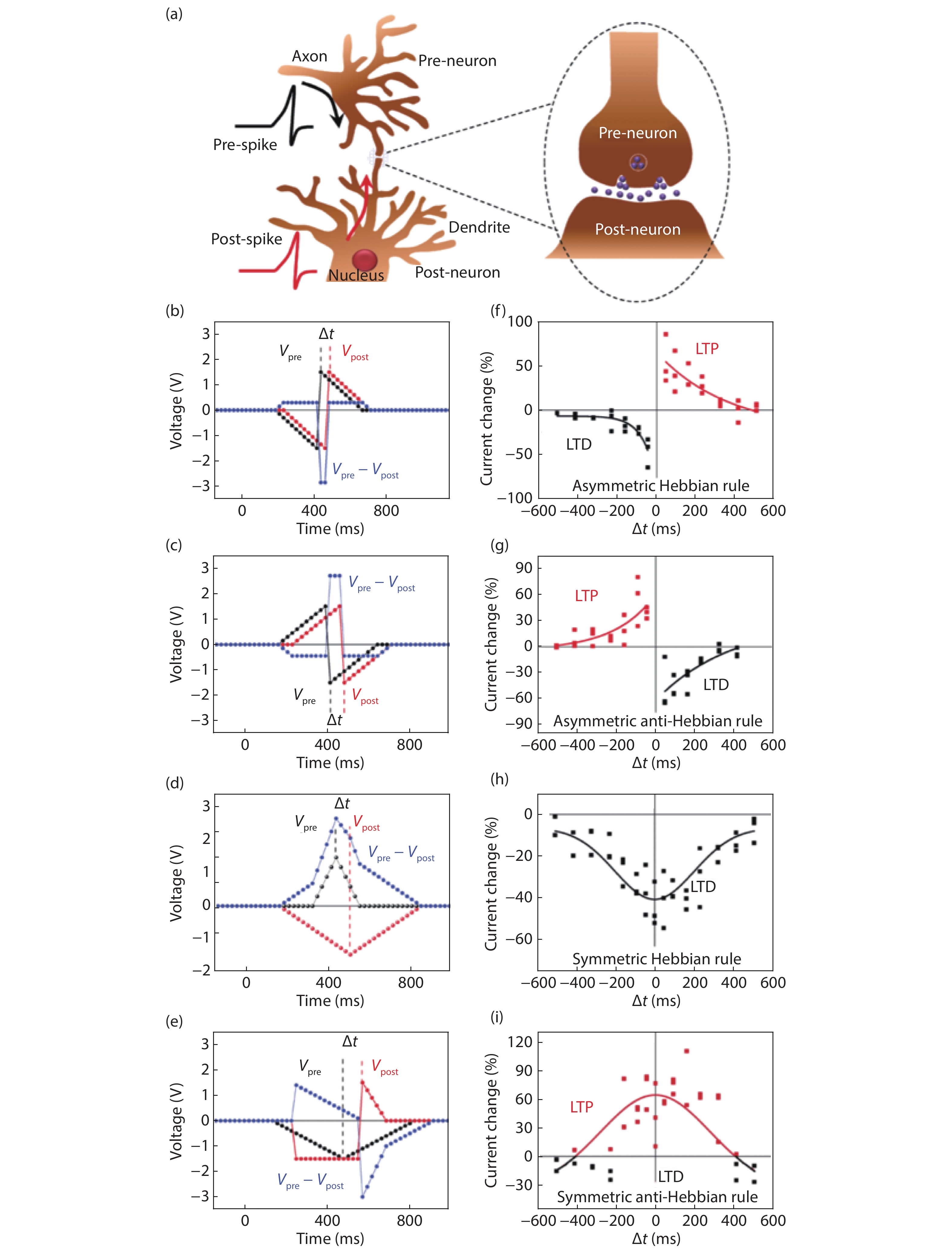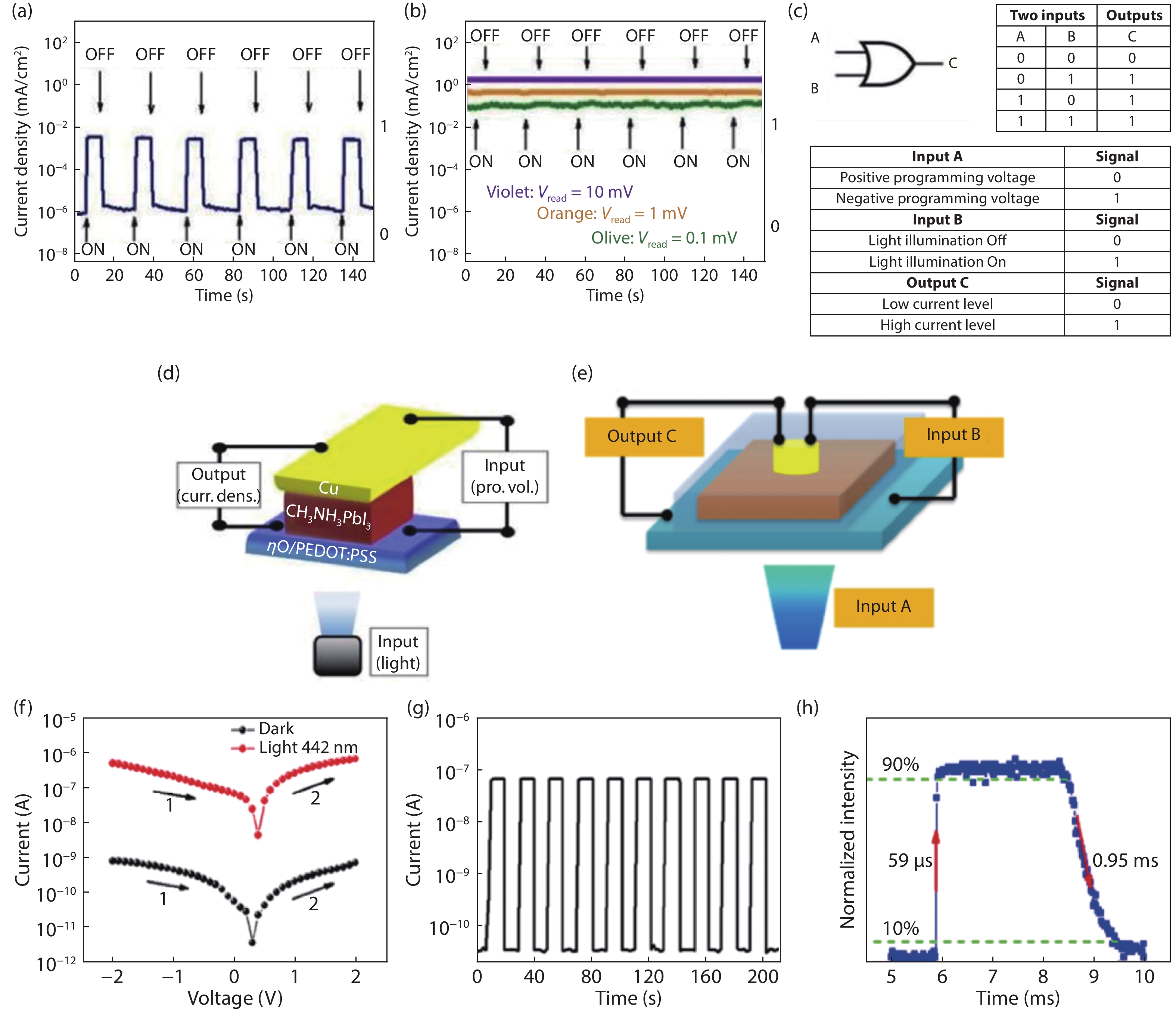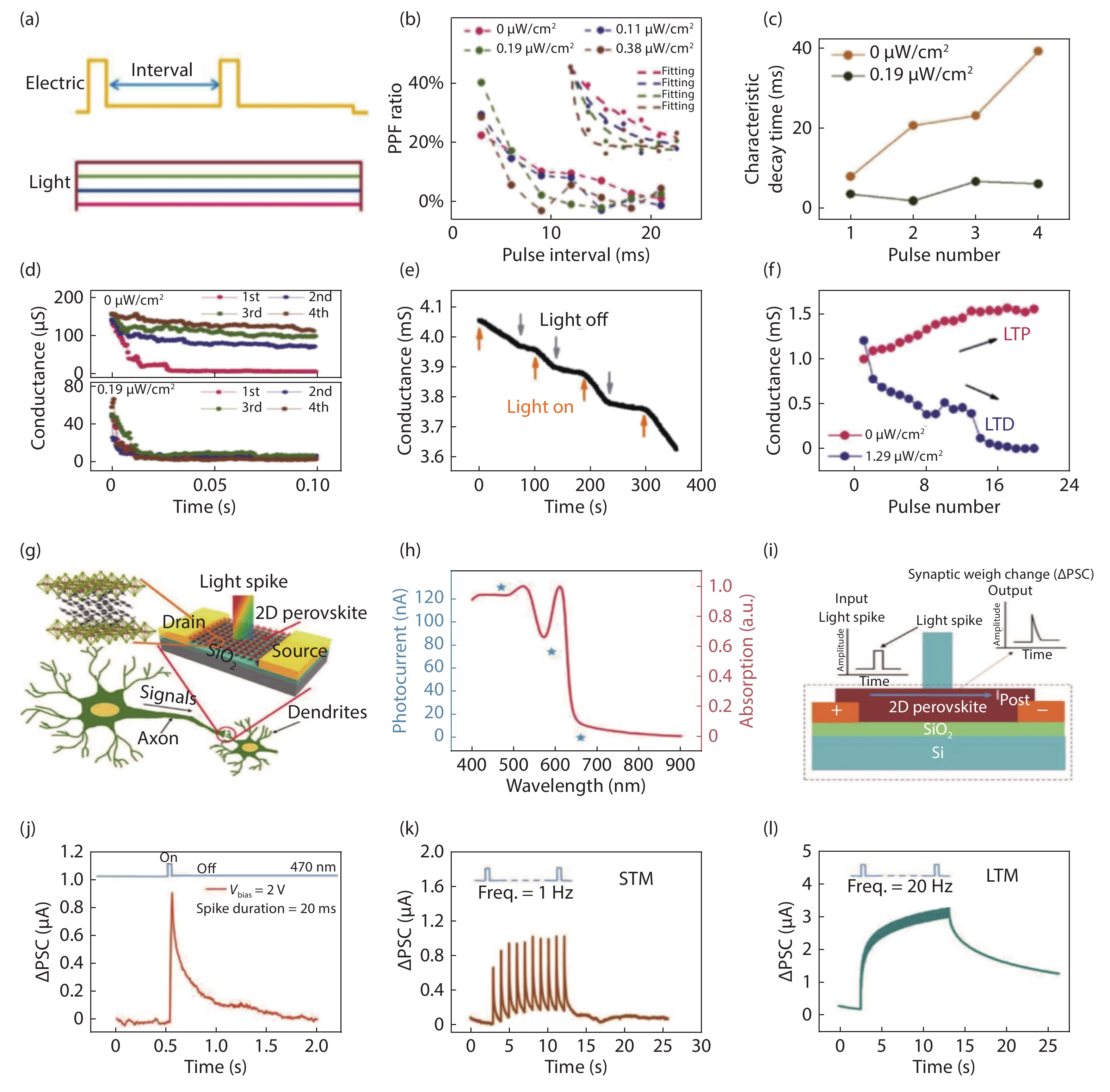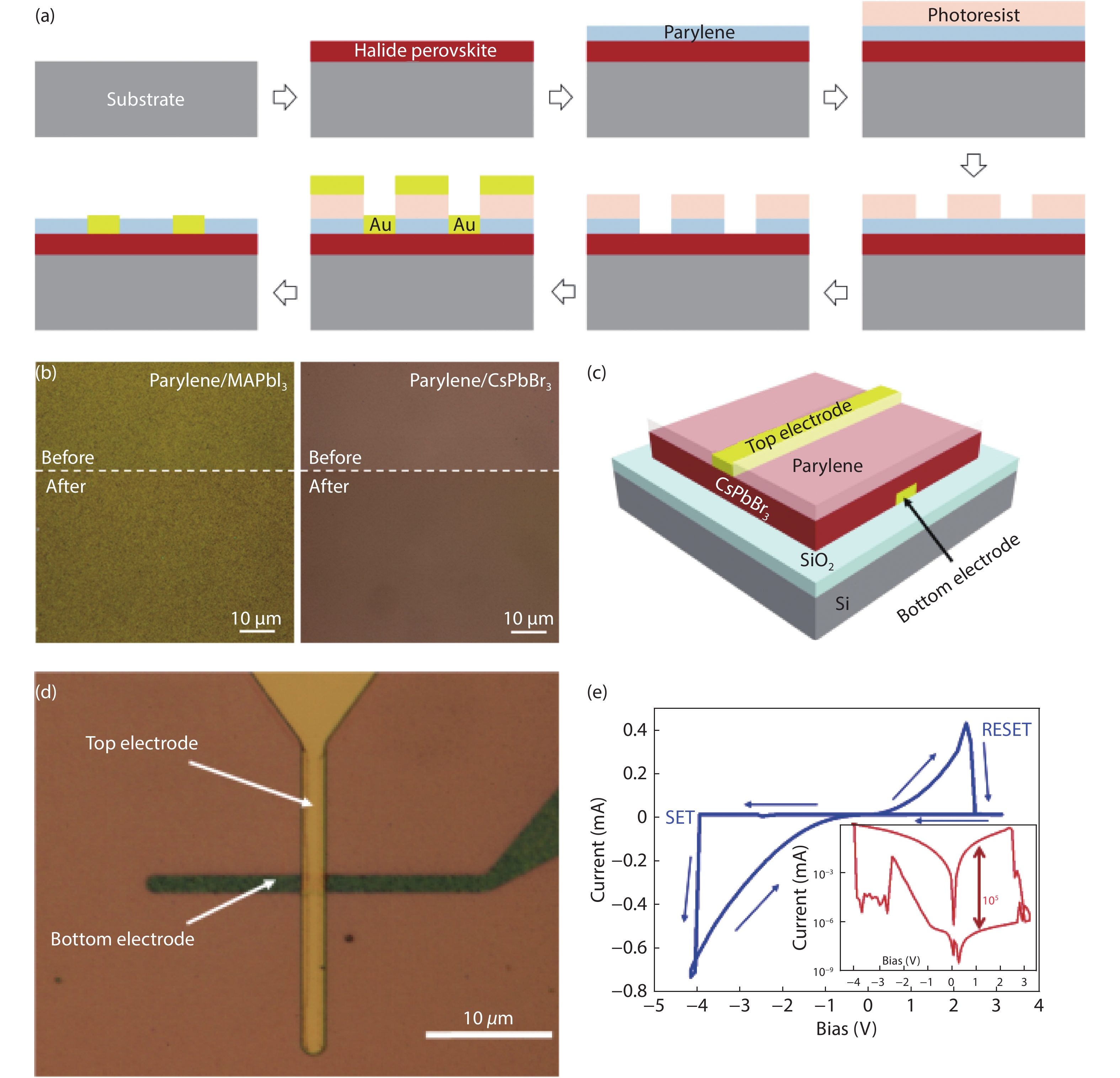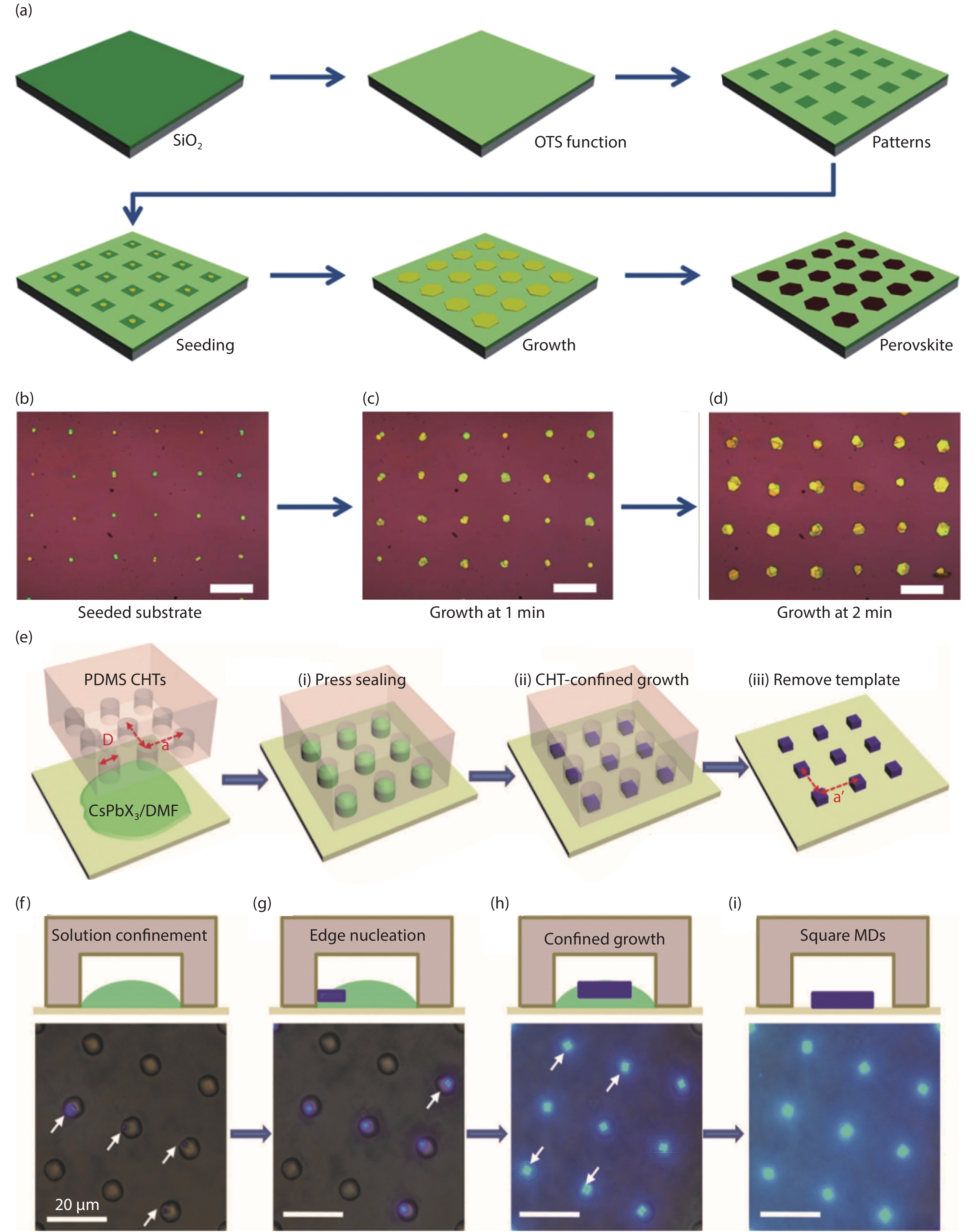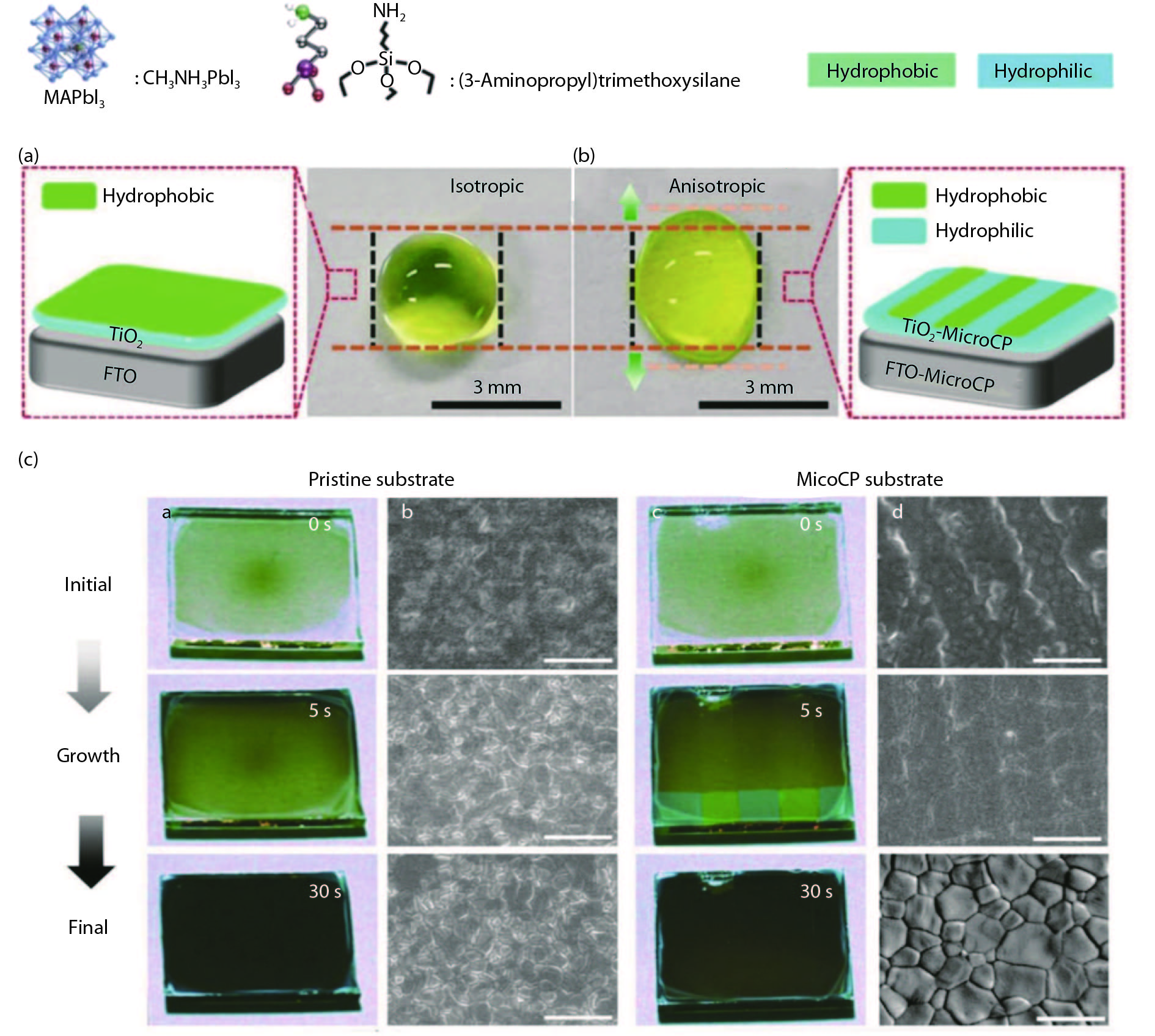| Citation: |
Gang Cao, Chuantong Cheng, Hengjie Zhang, Huan Zhang, Run Chen, Beiju Huang, Xiaobing Yan, Weihua Pei, Hongda Chen. The application of halide perovskites in memristors[J]. Journal of Semiconductors, 2020, 41(5): 051205. doi: 10.1088/1674-4926/41/5/051205
****
G Cao, C T Cheng, H J Zhang, H Zhang, R Chen, B J Huang, X B Yan, W H Pei, H D Chen, The application of halide perovskites in memristors[J]. J. Semicond., 2020, 41(5): 051205. doi: 10.1088/1674-4926/41/5/051205.
|
The application of halide perovskites in memristors
DOI: 10.1088/1674-4926/41/5/051205
More Information
-
Abstract
New neuromorphic architectures and memory technologies with low power consumption, scalability and high-speed are in the spotlight due to the von Neumann bottleneck and limitations of Moore's law. The memristor, a two-terminal synaptic device, shows powerful capabilities in neuromorphic computing and information storage applications. Active materials with high defect migration speed and low defect migration barrier are highly promising for high-performance memristors. Halide perovskite (HP) materials with point defects (such as gaps, vacancies, and inversions) have strong application potential in memristors. In this article, we review recent advances on HP memristors with exceptional performances. First, the working mechanisms of memristors are described. Then, the structures and properties of HPs are explained. Both electrical and photonic HP-based memristors are overviewed and discussed. Different fabrication methods of HP memristor devices and arrays are described and compared. Finally, the challenges in integrating HP memristors with complementary metal oxide semiconductors (CMOS) are briefly discussed. This review can assist in developing HP memristors for the next-generation information technology.-
Keywords:
- halide perovskites,
- memristors,
- fabrication methods,
- CMOS
-
References
[1] Ielmini D. Brain-inspired computing with resistive switching memory (RRAM): Devices, synapses and neural networks. Microelectron Eng, 2018, 190, 44 doi: 10.1016/j.mee.2018.01.009[2] Bliss T V P, Collingridge G L. A synaptic model of memory: long-term potentiation in the hippocampus. Nature, 1993, 361(6407), 31 doi: 10.1038/361031a0[3] Chua L. Resistance switching memories are memristors. Appl Phys A, 2011, 102(4), 765 doi: 10.1007/s00339-011-6264-9[4] Yao P, Wu H, Gao B, et al. Fully hardware-implemented memristor convolutional neural network. Nature, 2020, 577(7792), 641 doi: 10.1038/s41586-020-1942-4[5] Cai F, Correll J M, Lee S H, et al. A fully integrated reprogrammable memristor–CMOS system for efficient multiply-accumulate operations. Nat Electron, 2019, 2(7), 290 doi: 10.1038/s41928-019-0270-x[6] Qian W H, Cheng X F, Zhou J, et al. Lead-free perovskite MASnBr3-based memristor for quaternary information storage. InfoMat, 2019 doi: 10.1002/inf2.12066[7] Pang Y, Gao B, Lin B, et al. Memristors for hardware security applications. Adv Electron Mater, 2019, 5(9), 1800872 doi: 10.1002/aelm.201800872[8] Chen X, Zhou Y, Roy V A L, et al. Evolutionary metal oxide clusters for novel applications: toward high-density data storage in nonvolatile memories. Adv Mater, 2018, 30(3), 1703950 doi: 10.1002/adma.201703950[9] Tan Z H, Yang R, Terabe K, et al. Synaptic metaplasticity realized in oxide memristive devices. Adv Mater, 2016, 28(2), 377 doi: 10.1002/adma.201503575[10] Han S T, Zhou Y, Roy V A L. Towards the development of flexible non-volatile memories. Adv Mater, 2013, 25(38), 5425 doi: 10.1002/adma.201301361[11] Yoo S, Eom T, Gwon T, et al. Bipolar resistive switching behavior of an amorphous Ge2Sb2Te5 thin films with a Te layer. Nanoscale, 2015, 7(14), 6340 doi: 10.1039/C5NR01361E[12] Gu C, Lee J S. Flexible hybrid organic-inorganic perovskite memory. ACS nano, 2016, 10(5), 5413 doi: 10.1021/acsnano.6b01643[13] Tian H, Zhao L, Wang X, et al. Extremely low operating current resistive memory based on exfoliated 2D perovskite single crystals for neuromorphic computing. ACS Nano, 2017, 11(12), 12247 doi: 10.1021/acsnano.7b05726[14] Zhou F, Liu Y, Shen X, et al. Low-voltage, optoelectronic CH3NH3PbI3– xClx memory with integrated sensing and logic operations. Adv Funct Mater, 2018, 28(15), 1800080 doi: 10.1002/adfm.201800080[15] Stranks S D, Snaith H J. Metal-halide perovskites for photovoltaic and light-emitting devices. Nat Nanotechnol, 2015, 10(5), 391 doi: 10.1038/nnano.2015.90[16] Chen Q, De Marco N, Yang Y M, et al. Under the spotlight: The organic-inorganic hybrid halide perovskite for optoelectronic applications. Nano Today, 2015, 10(3), 355 doi: 10.1016/j.nantod.2015.04.009[17] Dong Q, Fang Y, Shao Y, et al. Electron-hole diffusion lengths > 175 μm in solution-grown CH3NH3PbI3 single crystals. Science, 2015, 347(6225), 967 doi: 10.1126/science.aaa5760[18] Lee M M, Teuscher J, Miyasaka T, et al. Efficient hybrid solar cells based on meso-superstructure organometal halide perovskites. Science, 2012, 338(6107), 643 doi: 10.1126/science.1228604[19] Fang Y, Dong Q, Shao Y, et al. Highly narrowband perovskite single-crystal photodetectors enabled by surface-charge recombination. Nat Photonics, 2015, 9(10), 679 doi: 10.1038/nphoton.2015.156[20] Shi D, Adinolfi V, Comin R, et al. Low trap-state density and long carrier diffusion in organolead trihalide perovskite single crystals. Science, 2015, 347(6221), 519 doi: 10.1126/science.aaa2725[21] Li F, Wang H, Kufer D, et al. Ultrahigh carrier mobility achieved in photoresponsive hybrid perovskite films via coupling with single-walled carbon nanotubes. Adv Mater, 2017, 29(16), 1602432 doi: 10.1002/adma.201602432[22] Anand B, Sampat S, Danilov E O, et al. Broadband transient absorption study of photoexcitations in lead halide perovskites: Towards a multiband picture. Phys Rev B, 2016, 93(16), 161205 doi: 10.1103/PhysRevB.93.161205[23] Tan Z K, Moghaddam R S, Lai M L, et al. Bright light-emitting diodes based on organometal halide perovskite. Nat Nanotechnol, 2014, 9(9), 687 doi: 10.1038/nnano.2014.149[24] Senanayak S P, Yang B, Thomas T H, et al. Understanding charge transport in lead iodide perovskite thin-film field-effect transistors. Sci Adv, 2017, 3(1), e1601935 doi: 10.1126/sciadv.1601935[25] Wang K, Wu C, Yang D, et al. Quasi-two-dimensional halide perovskite single crystal photodetector. ACS Nano, 2018, 12(5), 4919 doi: 10.1021/acsnano.8b01999[26] Yang T Y, Gregori G, Pellet N, et al. The significance of ion conduction in a hybrid organic-inorganic lead-iodide-based perovskite photosensitizer. Angew Chem Int Ed, 2015, 54(27), 7905 doi: 10.1002/anie.201500014[27] Haruyama J, Sodeyama K, Han L, et al. First-principles study of ion diffusion in perovskite solar cell sensitizers. J Am Chem Soc, 2015, 137(32), 10048 doi: 10.1021/jacs.5b03615[28] Chua L. Memristor-the missing circuit element. IEEE Trans Circuit Theory, 1971, 18(5), 507 doi: 10.1109/TCT.1971.1083337[29] Strukov D B, Snider G S, Stewart D R, et al. The missing memristor found. Nature, 2008, 453(7191), 80 doi: 10.1038/nature06932[30] Yoon J H, Zhang J, Ren X, et al. Truly electroforming-free and low-energy memristors with preconditioned conductive tunneling paths. Adv Funct Mater, 2017, 27(35), 1702010 doi: 10.1002/adfm.201702010[31] Ielmini D, Wong H S P. In-memory computing with resistive switching devices. Nat Electron, 2018, 1(6), 333 doi: 10.1038/s41928-018-0092-2[32] Xiao Z, Yuan Y, Shao Y, et al. Giant switchable photovoltaic effect in organometal trihalide perovskite devices. Nat Mater, 2015, 14(2), 193 doi: 10.1038/nmat4150[33] Xu J, Zhao X, Wang Z, et al. Biodegradable natural pectin-based flexible multilevel resistive switching memory for transient electronics. Small, 2019, 15(4), 1803970 doi: 10.1002/smll.201803970[34] Yan X, Wang K, Zhao J, et al. A new memristor with 2D Ti3C2T x MXene flakes as an artificial bio-synapse. Small, 2019, 15(25), 1900107 doi: 10.1002/smll.201900107[35] Yu F, Zhu L, Xiao H, et al. Restickable oxide neuromorphic transistors with spike-timing-dependent plasticity and pavlovian associative learning activities. Adv Funct Mater, 2018, 28(44), 1804025 doi: 10.1002/adfm.201804025[36] Yan X, Li X, Zhou Z, et al. Flexible transparent organic artificial synapse based on the tungsten/egg albumen/indium tin oxide/polyethylene terephthalate memristor. ACS Appl Mater Interfaces, 2019, 11(20), 18654 doi: 10.1021/acsami.9b04443[37] Yan X, Zhao Q, Chen A P, et al. Vacancy-induced synaptic behavior in 2D WS2 nanosheet-based memristor for low-power neuromorphic computing. Small, 2019, 15(24), 1901423 doi: 10.1002/smll.201901423[38] Choi S, Tan S H, Li Z, et al. SiGe epitaxial memory for neuromorphic computing with reproducible high performance based on engineered dislocations. Nat Mater, 2018, 17(4), 335 doi: 10.1038/s41563-017-0001-5[39] Yan X, Zhao J, Liu S, et al. Memristor with Ag-cluster-doped TiO2 films as artificial synapse for Neuroinspired computing. Adv Funct Mater, 2018, 28(1), 1705320 doi: 10.1002/adfm.201705320[40] Zhu X, Li D, Liang X, et al. Ionic modulation and ionic coupling effects in MoS2 devices for neuromorphic computing. Nat Mater, 2019, 18(2), 141 doi: 10.1038/s41563-018-0248-5[41] Muenstermann R, Menke T, Dittmann R, et al. Coexistence of filamentary and homogeneous resistive switching in Fe-doped SrTiO3 thin-film memristive devices. Adv Mater, 2010, 22(43), 4819 doi: 10.1002/adma.201001872[42] Jeong H Y, Lee J Y, Choi S Y. Interface-engineered amorphous TiO2-based resistive memory devices. Adv Funct Mater, 2010, 20(22), 3912 doi: 10.1002/adfm.201001254[43] Yang Y, Huang R. Probing memristive switching in nanoionic devices. Nat Electron, 2018, 1(5), 274 doi: 10.1038/s41928-018-0069-1[44] Budiman F, Hernowo D G O, Pandey R R, et al. Recent progress on fabrication of memristor and transistor-based neuromorphic devices for high signal processing speed with low power consumption. Jpn J Appl Phys, 2018, 57(3S2), 03EA06 doi: 10.7567/JJAP.57.03EA06[45] Chen J Y, Huang C W, Chiu C H, et al. Switching kinetic of VCM-based memristor: evolution and positioning of nanofilament. Adv Mater, 2015, 27(34), 5028 doi: 10.1002/adma.201502758[46] Liu Q, Sun J, Lv H, et al. Real-time observation on dynamic growth/dissolution of conductive filaments in oxide-electrolyte based ReRAM. Adv Mater, 2012, 24(14), 1844 doi: 10.1002/adma.201104104[47] Yang Y, Gao P, Li L, et al. Electrochemical dynamics of nanoscale metallic inclusions in dielectrics. Nat Commun, 2014, 5(1), 1 doi: 10.1038/ncomms5232[48] Yang Y, Lee J, Lee S, et al. Oxide resistive memory with functionalized graphene as built-in selector element. Adv Mater, 2014, 26(22), 3693 doi: 10.1002/adma.201400270[49] Kim S, Choi S H, Lu W. Comprehensive physical model of dynamic resistive switching in an oxide memristor. ACS Nano, 2014, 8(3), 2369 doi: 10.1021/nn405827t[50] Xue W, Liu G, Zhong Z, et al. A 1D vanadium dioxide nanochannel constructed via electric-field-induced ion transport and its superior metal-insulator transition. Adv Mater, 2017, 29(39), 1702162 doi: 10.1002/adma.201702162[51] Wang Z Q, Xu H Y, Li X H, et al. Memristors: synaptic learning and memory functions achieved using oxygen ion migration/diffusion in an amorphous InGaZnO Memristor. Adv Funct Mater, 2012, 22(13), 2758 doi: 10.1002/adfm.201290076[52] Chang C F, Chen J Y, Huang C W, et al. Direct observation of dual-filament switching behaviors in Ta2O5-based memristors. Small, 2017, 13(15), 1603116 doi: 10.1002/smll.201603116[53] Yan X, Zhou Z, Ding B, et al. Superior resistive switching memory and biological synapse properties based on a simple TiN/SiO2/p-Si tunneling junction structure. J Mater Chem C, 2017, 5(9), 2259 doi: 10.1039/C6TC04261A[54] Gao S, Liu G, Yang H, et al. An oxide Schottky junction artificial optoelectronic synapse. ACS Nano, 2019, 13(2), 2634 doi: 10.1021/acsnano.9b00340[55] Tan H, Liu G, Zhu X, et al. An optoelectronic resistive switching memory with integrated demodulating and arithmetic functions. Adv Mater, 2015, 27(17), 2797 doi: 10.1002/adma.201500039[56] Murphy E L, Good R H Jr. Thermionic emission, field emission, and the transition region. Phys Rev, 1956, 102(6), 1464 doi: 10.1103/PhysRev.102.1464[57] Emtage P R, Tantraporn W. Schottky emission through thin insulating films. Phys Rev Lett, 1962, 8(7), 267 doi: 10.1103/PhysRevLett.8.267[58] Simmons J G. Electric tunnel effect between dissimilar electrodes separated by a thin insulating film. J Appl Phys, 1963, 34(9), 2581 doi: 10.1063/1.1729774[59] Svensson C, Lundström I. Trap-assisted charge injection in MNOS structures. J Appl Phys, 1973, 44(10), 4657 doi: 10.1063/1.1662016[60] Ma Y, Wang S, Zheng L, et al. Recent research developments of perovskite solar cells. Chin J Chem, 2014, 32(10), 957 doi: 10.1002/cjoc.201400435[61] Shi Z, Guo J, Chen Y, et al. Lead-free organic-inorganic hybrid Perovskites for photovoltaic applications: recent advances and perspectives. Adv Mater, 2017, 29(16), 1605005 doi: 10.1002/adma.201605005[62] Miyata A, Mitioglu A, Plochocka P, et al. Direct measurement of the exciton binding energy and effective masses for charge carriers in organic-inorganic tri-halide perovskites. Nat Phys, 2015, 11(7), 582 doi: 10.1038/nphys3357[63] Stoumpos C C, Kanatzidis M G. Halide perovskites: poor man's high-performance semiconductors. Adv Mater, 2016, 28(28), 5778 doi: 10.1002/adma.201600265[64] Yao J S, Ge J, Han B N, et al. Ce3+-doping to modulate photoluminescence kinetics for efficient CsPbBr3 nanocrystals-based light-emitting diodes. J Am Chem Soc, 2018, 140(10), 3626 doi: 10.1021/jacs.7b11955[65] Swarnkar A, Ravi V K, Nag A. Beyond colloidal cesium lead halide perovskite nanocrystals: analogous metal halides and doping. ACS Energy Lett, 2017, 2(5), 1089 doi: 10.1021/acsenergylett.7b00191[66] Liang J, Liu J, Jin Z. All-inorganic halide perovskites for optoelectronics: progress and prospects. Sol RRL, 2017, 1(10), 1700086 doi: 10.1002/solr.201700086[67] Yoo E J, Lyu M, Yun J H, et al. Resistive switching behavior in organic-inorganic hybrid CH3NH3PbI3– xClx perovskite for resistive random-access memory devices. Adv Mater, 2015, 27(40), 6170 doi: 10.1002/adma.201502889[68] Wang H, Kim D H. Perovskite-based photodetectors: materials and devices. Chem Soc Rev, 2017, 46(17), 5204 doi: 10.1039/C6CS00896H[69] Zhou J, Huang J. Photodetectors based on organic-inorganic hybrid lead halide perovskites. Adv Sci, 2018, 5(1), 1700256 doi: 10.1002/advs.201700256[70] Choi J, Han J S, Hong K, et al. Organic–inorganic hybrid halide perovskites for memories, transistors, and artificial synapses. Adv Mater, 2018, 30(42), 1704002 doi: 10.1002/adma.201704002[71] Tress W. Metal halide perovskites as mixed electronic-ionic conductors: challenges and opportunities from hysteresis to memristivity. J Phys Chem Lett, 2017, 8(13), 3106 doi: 10.1021/acs.jpclett.7b00975[72] Ma Z, Li F, Qi G, et al. Structural stability and optical properties of two-dimensional perovskite-like CsPb2Br5 microplates in response to pressure. Nanoscale, 2019, 11(3), 820 doi: 10.1039/C8NR05684F[73] Xing G, Mathews N, Sun S, et al. Long-range balanced electron- and hole-transport lengths in organic–inorganic CH3NH3PbI3. Science, 2013, 342(6156), 344 doi: 10.1126/science.1243167[74] Weidman M C, Seitz M, Stranks S D, et al. Highly tunable colloidal perovskite nanoplatelets through variable cation, metal, and halide composition. ACS Nano, 2016, 10(8), 7830 doi: 10.1021/acsnano.6b03496[75] Cuhadar C, Kim S G, Yang J M, et al. All-inorganic bismuth halide perovskite-like materials A3Bi2I9 and A3Bi1.8Na0.2I8.6 (A = Rb and Cs) for low-voltage switching resistive memory. ACS Appl Mater Interfaces, 2018, 10(35), 29741 doi: 10.1021/acsami.8b07103[76] Acharyya P, Pal P, Samanta P K, et al. Single pot synthesis of indirect band gap 2D CsPb2Br5 nanosheets from direct band gap 3D CsPbBr3 nanocrystals and the origin of their luminescence properties. Nanoscale, 2019, 11(9), 4001 doi: 10.1039/C8NR09349K[77] Iwahara H. Ionic conduction in perovskite-type compounds. In: Perovskite Oxide for Solid Oxide Fuel Cells. Boston: Springer, 2009, 45[78] Li C, Tscheuschner S, Paulus F, et al. Iodine migration and its effect on hysteresis in perovskite solar cells. Adv Mater, 2016, 28(12), 2446 doi: 10.1002/adma.201503832[79] Leng K, Abdelwahab I, Verzhbitskiy I, et al. Molecularly thin two-dimensional hybrid perovskites with tunable optoelectronic properties due to reversible surface relaxation. Nat Mater, 2018, 17(10), 908 doi: 10.1038/s41563-018-0164-8[80] Qian L, Sun Y, Wu M, et al. A lead-free two-dimensional perovskite for a high-performance flexible photoconductor and a light-stimulated synaptic device. Nanoscale, 2018, 10(15), 6837 doi: 10.1039/C8NR00914G[81] Prezioso M, Merrikh-Bayat F, Hoskins B D, et al. Training and operation of an integrated neuromorphic network based on metal–oxide memristors. Nature, 2015, 521(7550), 61 doi: 10.1038/nature14441[82] Liu S J, Lin Z H, Zhao Q, et al. Flash-memory effect for polyfluorenes with on-chain iridium (III) complexes. Adv Funct Mater, 2011, 21(5), 979 doi: 10.1002/adfm.201001884[83] Zhao L, Wang K, Wei W, et al. High-performance flexible sensing devices based on polyaniline/MXene nanocomposites. InfoMat, 2019, 1(3), 407 doi: 10.1002/inf2.12032[84] Lin G, Lin Y, Cui R, et al. An organic-inorganic hybrid perovskite logic gate for better computing. J Mater Chem C, 2015, 3(41), 10793 doi: 10.1039/C5TC02270C[85] Yan K, Peng M, Yu X, et al. High-performance perovskite memristor based on methyl ammonium lead halides. J Mater Chem C, 2016, 4(7), 1375 doi: 10.1039/C6TC00141F[86] Yang J M, Choi E S, Kim S Y, et al. Perovskite-related (CH3NH3)3Sb2Br9 for forming-free memristor and low-energy-consuming neuromorphic computing. Nanoscale, 2019, 11(13), 6453 doi: 10.1039/C8NR09918A[87] Choi J, Park S, Lee J, et al. Organolead halide perovskites for low operating voltage multilevel resistive switching. Adv Mater, 2016, 28(31), 6562 doi: 10.1002/adma.201600859[88] Yang J M, Kim S G, Seo J Y, et al. 1D hexagonal HC(NH2)2PbI3 for multilevel resistive switching nonvolatile memory. Adv Electron Mater, 2018, 4(9), 1800190 doi: 10.1002/aelm.201800190[89] Wang W, Xu J, Ma H, et al. Insertion of nanoscale AgInSbTe layer between the Ag electrode and the CH3NH3PbI3 electrolyte layer enabling enhanced multilevel memory. ACS Appl Nano Mater, 2019, 2(1), 307 doi: 10.1021/acsanm.8b01928[90] Guan X, Hu W, Haque M A, et al. Light-responsive ion-redistribution-induced resistive switching in hybrid perovskite Schottky junctions. Adv Funct Mater, 2018, 28(3), 1704665 doi: 10.1002/adfm.201704665[91] Hwang B, Lee J S. A strategy to design high-density nanoscale devices utilizing vapor deposition of metal halide perovskite materials. Adv Mater, 2017, 29(29), 1701048 doi: 10.1002/adma.201701048[92] Zhu X, Lee J, Lu W D. Iodine vacancy redistribution in organic–inorganic halide perovskite films and resistive switching effects. Adv Mater, 2017, 29(29), 1700527 doi: 10.1002/adma.201700527[93] Lin C C, Tu B C, Lin C H, et al. Resistive switching mechanisms of V-doped SrZrO3 memory films. IEEE Electron Device Lett, 2006, 27(9), 725 doi: 10.1109/LED.2006.880660[94] Yoo E, Lyu M, Yun J H, et al. Bifunctional resistive switching behavior in an organolead halide perovskite-based Ag/CH3NH3PbI3– xClx/FTO structure. J Mater Chem C, 2016, 4(33), 7824 doi: 10.1039/C6TC02503J[95] Xiao Z, Huang J. Energy-efficient hybrid perovskite memristors and synaptic devices. Adv Electron Mater, 2016, 2(7), 1600100 doi: 10.1002/aelm.201600100[96] Yan X, Zhang L, Chen H, et al. Graphene oxide quantum dots based memristors with progressive conduction tuning for artificial synaptic learning. Adv Funct Mater, 2018, 28(40), 1803728 doi: 10.1002/adfm.201803728[97] Yan X, Pei Y, Chen H, et al. Self-assembled networked PbS distribution quantum dots for resistive switching and artificial synapse performance boost of memristors. Adv Mater, 2019, 31(7), 1805284 doi: 10.1002/adma.201805284[98] Xu W, Cho H, Kim Y H, et al. Organometal halide perovskite artificial synapses. Adv Mater, 2016, 28(28), 5916 doi: 10.1002/adma.201506363[99] Gholipour B, Bastock P, Craig C, et al. Amorphous metal-sulphide microfibers enable photonic synapses for brain-like computing. Adv Opt Mater, 2015, 3(5), 635 doi: 10.1002/adom.201400472[100] Pei K, Ren X, Zhou Z, et al. A high-performance optical memory array based on inhomogeneity of organic semiconductors. Adv Mater, 2018, 30(13), 1706647 doi: 10.1002/adma.201706647[101] Gorecki J, Apostolopoulos V, Ou J Y, et al. Optical gating of graphene on photoconductive Fe: LiNbO3. ACS Nano, 2018, 12(6), 5940 doi: 10.1021/acsnano.8b02161[102] Shen Y, Harris N C, Skirlo S, et al. Deep learning with coherent nanophotonic circuits. Nat Photonics, 2017, 11(7), 441 doi: 10.1038/nphoton.2017.93[103] Dai S, Zhao Y, Wang Y, et al. Recent advances in transistor-based artificial synapses. Adv Funct Mater, 2019, 29(42), 1903700 doi: 10.1002/adfm.201903700[104] Wu Y, Wei Y, Huang Y, et al. Capping CsPbBr3 with ZnO to improve performance and stability of perovskite memristors. Nano Res, 2017, 10(5), 1584 doi: 10.1007/s12274-016-1288-2[105] Yizhar O, Fenno L E, Davidson T J, et al. Optogenetics in neural systems. Neuron, 2011, 71(1), 9 doi: 10.1016/j.neuron.2011.06.004[106] Liu X, Ramirez S, Pang P T, et al. Optogenetic stimulation of a hippocampal engram activates fear memory recall. Nature, 2012, 484(7394), 381 doi: 10.1038/nature11028[107] Zhu X, Lu W D. Optogenetics-inspired tunable synaptic functions in memristors. ACS Nano, 2018, 12(2), 1242 doi: 10.1021/acsnano.7b07317[108] Fenno L, Yizhar O, Deisseroth K. The development and application of optogenetics. Annu Rev Neurosci, 2011, 34, 389 doi: 10.1146/annurev-neuro-061010-113817[109] Kramer R H, Mourot A, Adesnik H. Optogenetic pharmacology for control of native neuronal signaling proteins. Nat Neurosci, 2013, 16(7), 816 doi: 10.1038/nn.3424[110] Sun Y, Qian L, Xie D, et al. Photoelectric synaptic plasticity realized by 2D perovskite. Adv Funct Mater, 2019, 29(28), 1902538 doi: 10.1002/adfm.201902538[111] Jeon N J, Noh J H, Yang W S, et al. Compositional engineering of perovskite materials for high-performance solar cells. Nature, 2015, 517(7535), 476 doi: 10.1038/nature14133[112] Lim K G, Ahn S, Kim Y H, et al. Universal energy level tailoring of self-organized hole extraction layers in organic solar cells and organic-inorganic hybrid perovskite solar cells. Energy Environ Sci, 2016, 9(3), 932 doi: 10.1039/C5EE03560K[113] Cheng C, Zhu C, Huang B, et al. Processing halide perovskite materials with semiconductor technology. Adv Mater Technol, 2019, 4(7), 1800729 doi: 10.1002/admt.201800729[114] Chamlagain B, Li Q, Ghimire N J, et al. Mobility improvement and temperature dependence in MoSe2 field-effect transistors on parylene-C substrate. ACS Nano, 2014, 8(5), 5079 doi: 10.1021/nn501150r[115] Skoblin G, Sun J, Yurgens A. Encapsulation of graphene in parylene. Appl Phys Lett, 2017, 110(5), 053504 doi: 10.1063/1.4975491[116] Kim M, Shah A, Li C, et al. Direct transfer of wafer-scale graphene films. 2D Mater, 2017, 4(3), 035004 doi: 10.1088/2053-1583/aa780d[117] Yang X, Wu J, Liu T, et al. Patterned perovskites for optoelectronic applications. Small Methods, 2018, 2(10), 1800110 doi: 10.1002/smtd.201800110[118] Wang G, Li D, Cheng H C, et al. Wafer-scale growth of large arrays of perovskite microplate crystals for functional electronics and optoelectronics. Sci Adv, 2015, 1(9), e1500613 doi: 10.1126/sciadv.1500613[119] He X, Liu P, Zhang H, et al. Patterning multicolored microdisk laser arrays of cesium lead halide perovskite. Adv Mater, 2017, 29(12), 1604510 doi: 10.1002/adma.201604510[120] Zhao P, Kim B J, Ren X, et al. Antisolvent with an ultrawide processing window for the one-step fabrication of efficient and large-area perovskite solar cells. Adv Mater, 2018, 30(49), 1802763 doi: 10.1002/adma.201802763[121] Ren Y K, Ding X H, Wu Y H, et al. Temperature-assisted rapid nucleation: a facile method to optimize the film morphology for perovskite solar cells. J Mater Chem A, 2017, 5(38), 20327 doi: 10.1039/C7TA06334B[122] Sanchez S, Christoph N, Grobety B, et al. Efficient and stable inorganic perovskite solar cells manufactured by pulsed flash infrared annealing. Adv Energy Mater, 2018, 8(30), 1802060 doi: 10.1002/aenm.201802060[123] Li D, Cheng H C, Wang Y, et al. The effect of thermal annealing on charge transport in organolead halide perovskite microplate field-effect transistors. Adv Mater, 2017, 29(4), 1601959 doi: 10.1002/adma.201601959[124] Wang Y, Li M, Li H, et al. Patterned wettability surface for competition-driving large-grained perovskite solar cells. Adv Energy Mater, 2019, 9(25), 1900838 doi: 10.1002/aenm.201900838 -
Proportional views





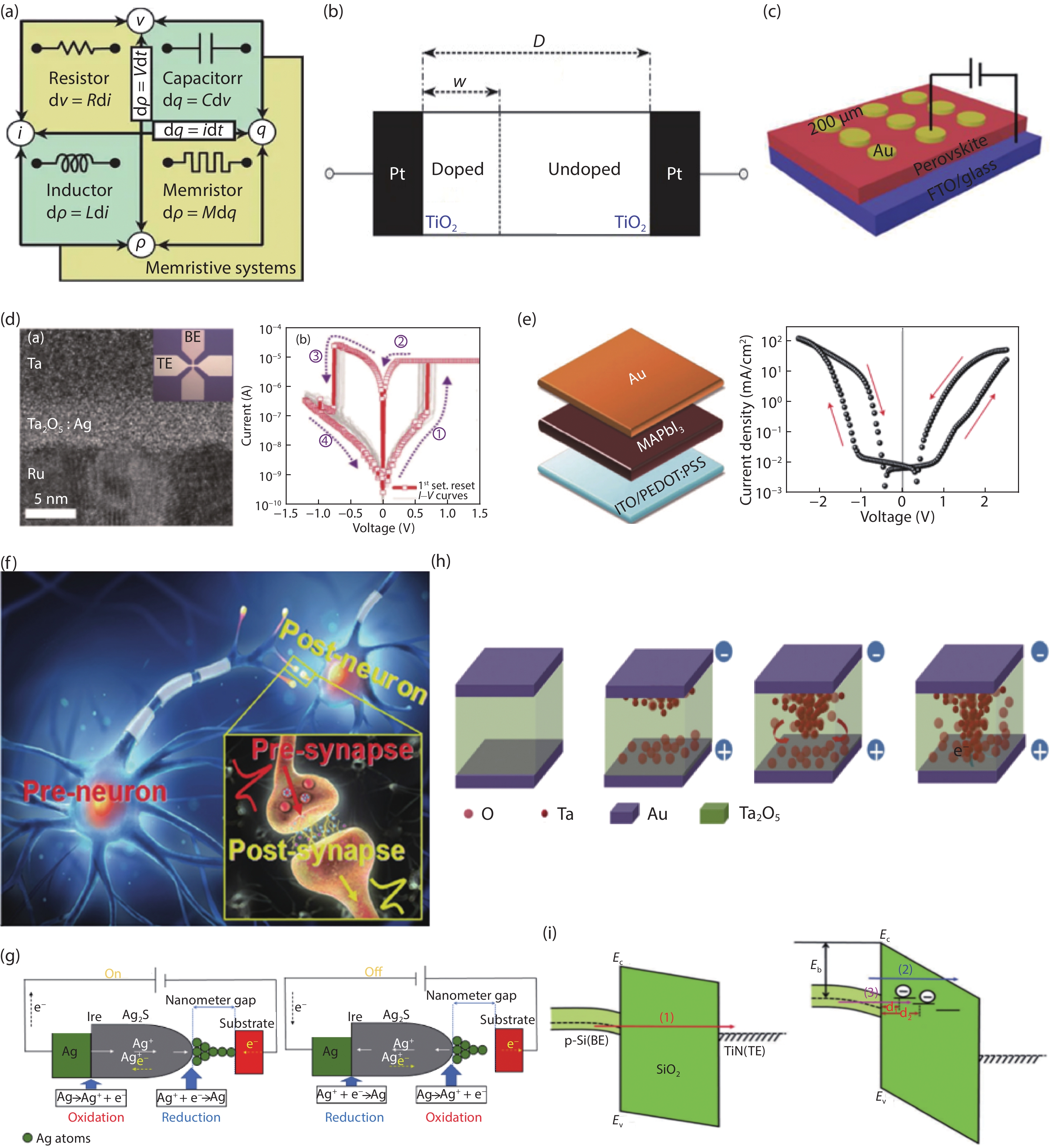
 DownLoad:
DownLoad:
